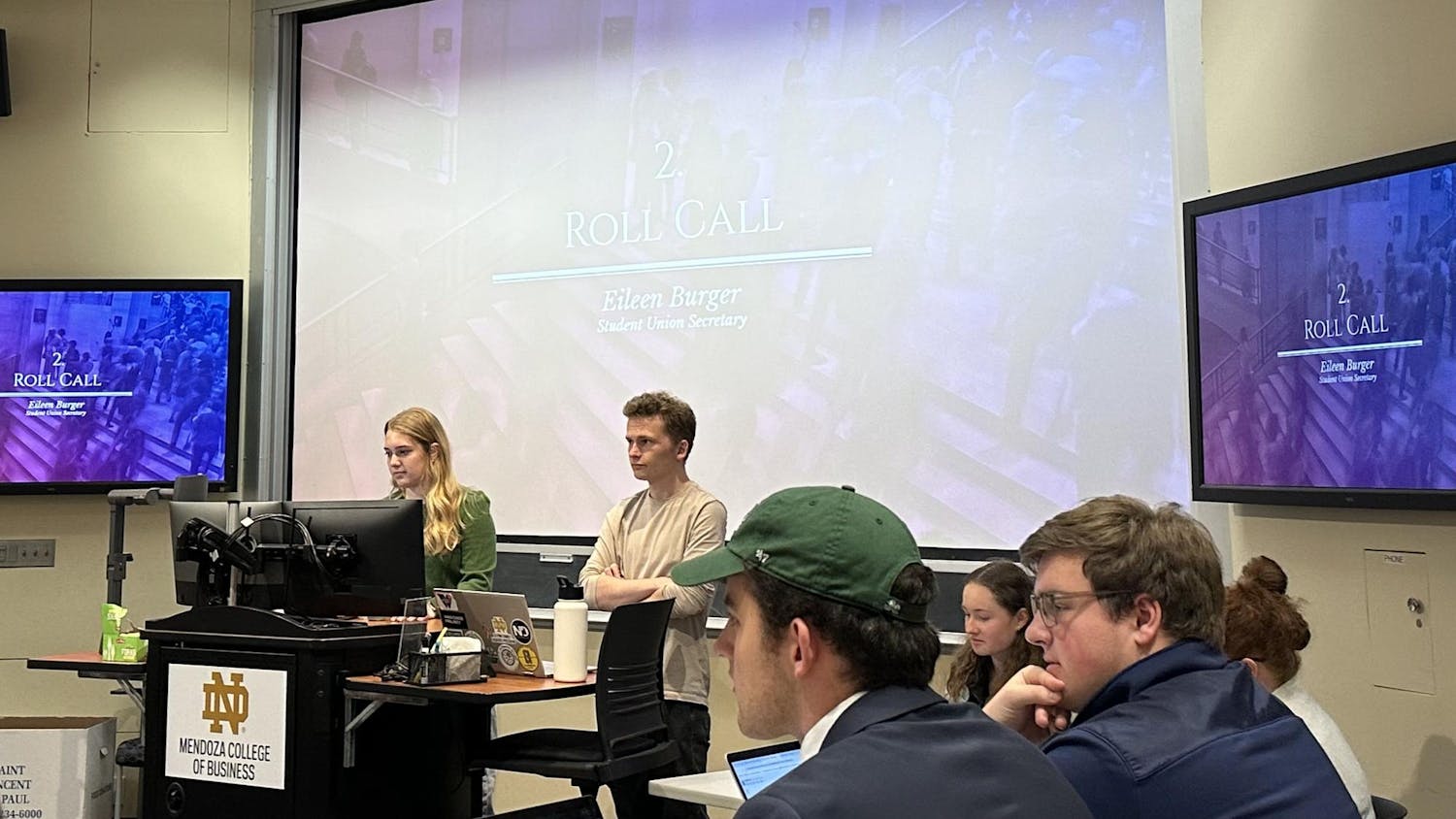Members of the advisory committee for Notre Dame’s Gallivan Program in Journalism, Ethics and Democracy gathered Nov. 24 for a panel discussion about “traditional” versus digital news and how online publications are changing the face of journalism.
The event, titled “The New York Times vs. BuzzFeed: Can Traditional Journalism Compete with Digital News?,” gathered six advisors and program director Robert Schmuhl, chair of the American Studies department. Panelists included Anne Thompson, chief environmental affairs correspondent for NBC News; Meg Martin, associate editor for mobile and breaking news at Minnesota Public Radio; Tom Bettag, producer for NBC News; Maddie Hanna, reporter for the Philadelphia Inquirer; Daniel Leduc, senior officer and editor for The Pew Charitable Trusts, and Robert Costa, national political reporter for The Washington Post.
Schmuhl began the discourse by asking whether the dynamic between the traditional news media and new digital outlets would be better described as competition or conflict.
Costa said the internet is an equalizing force, but the traditional brand weight carried by established news outlets is an advantage.
“If you want to be creative with your coverage, you can do that from any platform, any organization,” he said. “If it’s quality, it will get read, and it will get noticed. The only thing the traditional media still has an edge up on is when it comes to traditional things – if the president wants to sit down with an organization, he’s likely not going to sit down with BuzzFeed.”
Bettag agreed and said “brand is everything.”
“In this era when there are a hundred possible outlets, having a brand that stands for something [means] that I recognize that and I’ll go there, out of all 280 of these channels and all the different options,” he said. “Brand consciousness is the key to success.
“People identify themselves with certain … media outlets, and these become loyalties that are so important for outlets looking for the young demographic. Once you say you’re a committed viewer, you’re going to carry that until you’re 80 years old. If they can get you now, you will stay with that.”
Martin said the idea of “traditional media” is misleading because of blending platforms.
“I do have trouble with the idea of the traditional media because if the Washington Post is talking to the president, they’re not just going to print that in the paper,” she said. “They’re going to put it on their website immediately. They might even live stream it. So is that television? … Yes, it’s a newsroom that has been around for awhile, a lot longer than an online organization, but I still have a little trouble with the [traditional media] construct.”
Social media is another factor at play, and it can diminish brand power, Hanna said.
“Maybe there’s some sort of brand loyalty, but there’s also this egalitarian system where I happen to see a link that’s being circulated on social media, so I’ll visit the site,” she said. “It’s not really because it’s from any particular news outlet, so I think that’s the biggest way that the web levels the playing field.”
Thompson said her biggest concern with BuzzFeed or other internet sites such as Gawker or the Huffington Post is that the information verification process might not be as meticulous as it is with a more traditional news organization.
“I don’t know what [BuzzFeed’s] oversight is, so as a consumer of news, I am wary of what I see or read from them,” she said. “I know that if it’s in The Washington Post or The New York Times or The Wall Street Journal or any of the three broadcast networks or CNN, there is a vetting process it goes through to catch potential mistakes.”
Leduc said he sees BuzzFeed and other digital-only outelts already moving to more “ambitious” coverage.
“BuzzFeed and a couple of other sites who are trying to increase their ambition, they’re doing it by trying to do what traditional media does,” he said. “BuzzFeed made a big deal of creating an investigative unit, and they hired someone experienced to run that unit.”
Bettag said he believes the two extremes can coexist if the audience is willing to use each on its own terms.
“To some extent … they’re like apples and oranges,” he said. “I think offering people two different things with different standards that promise people different things is perfectly fine. …That’s a business, and it’s good business.”
Thompson said she does not think network news will die, but rather that people will access it in different ways.
“Maybe instead of watching it on TV, you watch it on your iPhone. You watch it on your iPad,” she said. “What’s great for you is that journalism is not a dying industry, it is a growing industry.
“Technology is changing the way we access journalism, but people still need to know what’s going on. They still need somebody to get out there and ask questions and investigate, and it will take different forms.”
The panelists discussed their personal news consumption habits, ranging from radio broadcasts to Twitter to traditional newspapers. They agreed that Twitter is a valuable medium for both consuming and disseminating news.
“I read Twitter constantly; it’s like my headline service,” Thompson said.
“I also am a constant checker of Twitter," Hanna said.
“I use Twitter lists a lot," Martin said. "There’s no way I could follow the billions of people I follow if I didn’t organize them. I check my Minnesota list; I check my regular feed; I check my breaking news feed; I have a Catholic Church feed."
“Twitter is a great way to compete,” Costa said. “It keeps people on edge. You don’t want to be consumed by it, but you want to make sure you’re engaged. … Our editors at the Post are always telling us to share what you know, in an article or on Twitter, but show people that the Washington Post is on top of it.”













